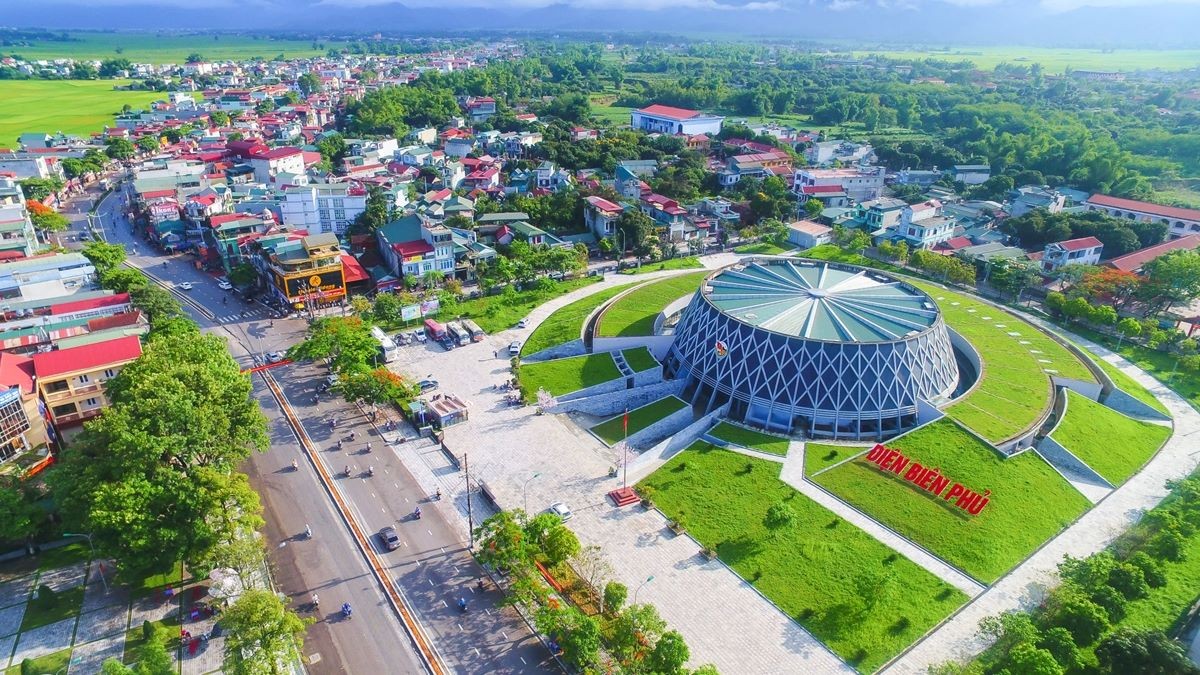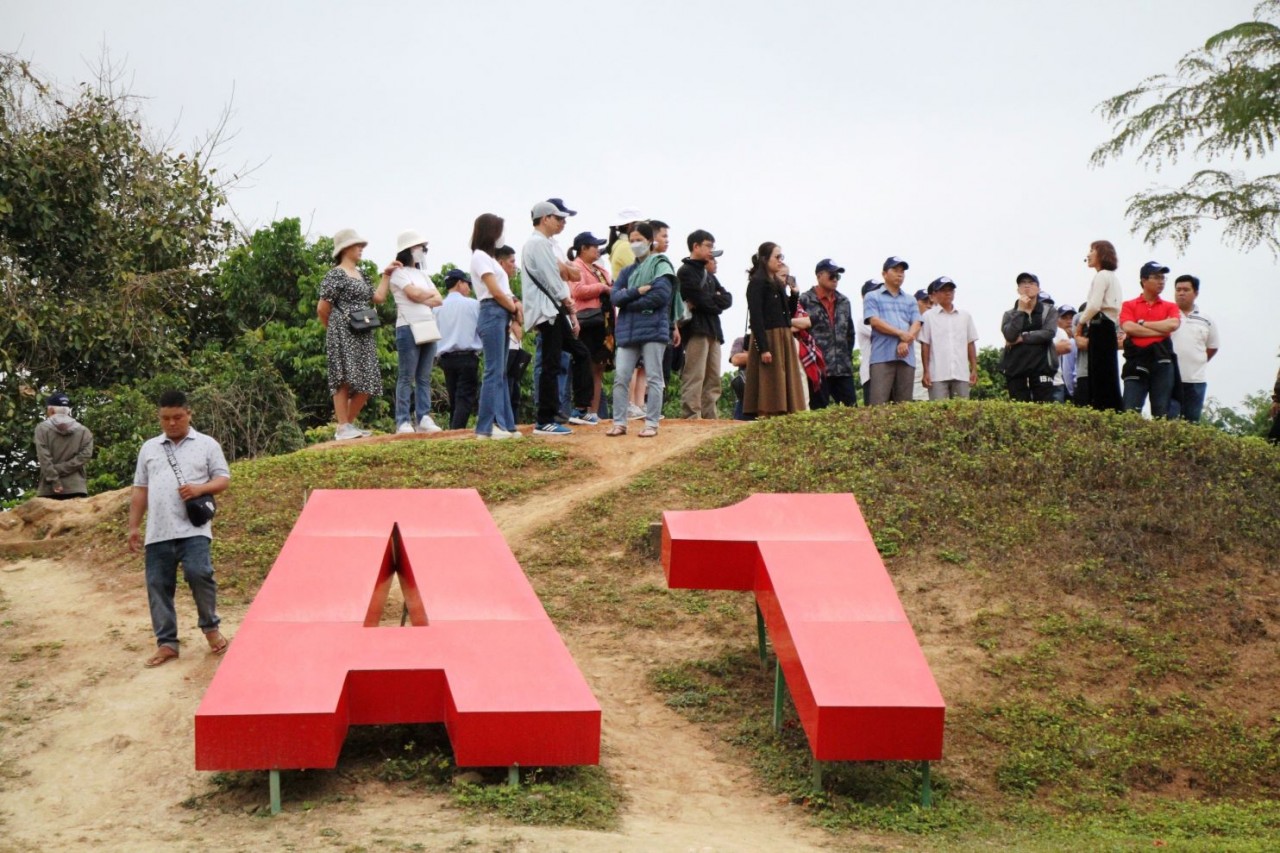
Dien Bien: Ambitious visions for 2021-2030 and beyond to 2050
Latest
The People's Committee has called for heightened dissemination and public engagement to foster a unified vision, a shared aspiration for growth, and a collective commitment to the effective execution of the plan.
 |
| Planning provides the basis for implementing investment in construction projects and initiatives. (Photo: VGP) |
The plan serves as a fundamental framework for directing investments in infrastructure and project development, aiming to elevate Dien Bien to a position of relative advancement in the midland and northern mountainous regions by 2030. Key focuses include transforming Dien Bien into a hub for tourism, healthcare, and a pioneer in the application of modern science and technology in agriculture and forestry. This ambition is rooted from a vision for substantial economic growth, targeting an annual economic growth rate of 10.51% and reducing multidimensional poverty to below 8%.
According to Mr. Nguyen Thanh Phong, Director of the Department of Construction, the provincial plan, once approved, serves as the basis for the province's leaders to direct, manage, and uniformly, comprehensively develop the economy and society, ensuring national defense - security, integration, and foreign affairs. This is an important foundation for policy formulation, investment planning, and creating a driving force for production, business development, and social security in the province. Moreover, provincial planning plays a role in determining visionary thinking, development models, scenarios, and organizing the development resources and space. The planning also creates opportunities, enhances production capacity, and introduces new values for each locality.
The provincial planning identifies tourism as a spearhead economic sector. Early implementation of the planning provides development orientations for sectors and focuses investment on pivotal and advantageous industries. It also determines important sectors to specify development directions (agriculture, forestry as the foundation; construction as the driving force; tourism as the spearhead economic sector). Additionally, the provincial planning clearly defines a new spatial development structure with 3 economic zones, 4 dynamic axes, and 4 growth poles.
The announcement of the provincial planning is the basis for levels, sectors, and localities to enhance management work, especially in construction management, urban order, and urban development. Recently, urban development in the province, especially in Dien Bien Phu City, has shown noticeable progress, increasingly affirming the urban area's role as a dynamic force and locomotive for socio-economic development. Currently, the province has 7 urban areas, including one third-tier city (Dien Bien Phu City), one fourth-tier town (Muong Lay Town), and five fifth-tier towns.
 |
| Tourists visit the historical site of Hill A1. (Photo: VNA) |
According to the planning, Tua Chua is identified as a second-tier economic zone focusing on the development of agriculture - forestry economy and processing industry, tourism.
However, urban development still faces many inadequacies. These include uneven urbanization across regions; the urbanization rate not achieving the set target (reaching 28%, much lower than the national average). Urban development mainly expands horizontally with low density and dispersion, causing land wastage and limiting economic concentration. The urban system develops imbalanced-ly, lacks connectivity, has not yet defined and shared functions among regions. Investment in urban development is still spread out, lacking synchronicity, not fully exploiting and utilizing resources from the urban itself for development.
By 2030, the province aims to have 11 urban areas, including one second-tier city, two fourth-tier towns, and the remaining as fifth-tier towns, with an urbanization rate of over 32%. To achieve the set targets, the Department of Construction will continue to advise the Provincial People's Committee to issue projects, programs, and plans on urban development. Coordinate with relevant departments and sectors to review, propose amendments, additions, issue new mechanisms, policies to overcome existing limitations, enhance the quality of planning, construction, and urban development.
Based on the provincial planning approved by the Prime Minister, the province has directed the review and completion of diagrams, maps, databases, and planning documents to ensure suitability and uniformity. Focus on preparing the best conditions for the conference to announce the provincial planning and promote investment; at the same time, direct the construction of the implementation plan for the provincial planning for the 2021-2030 period, with a vision to 2050. Based on that, related departments and sectors have coordinated with consulting units to review, adjust, supplement, develop new related plannings, and concretize the provincial planning content into the 2024 socio-economic development program. At the same time, deploy planning, plan and investment management solutions to ensure synchronization, smoothness.
Communication work is focused to timely provide information about the provincial planning; introduce, promote potentials, advantages, priority projects of the province to investors, businesses, and people to understand, grasp the thinking, vision, new development space of the province. Through that, promoting investment attraction, mobilizing resources to realize provincial planning; raising awareness, responsibility of levels, sectors, business community, and people, creating consensus and high determination to implement the provincial planning well.

















